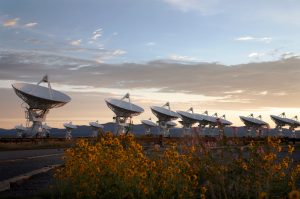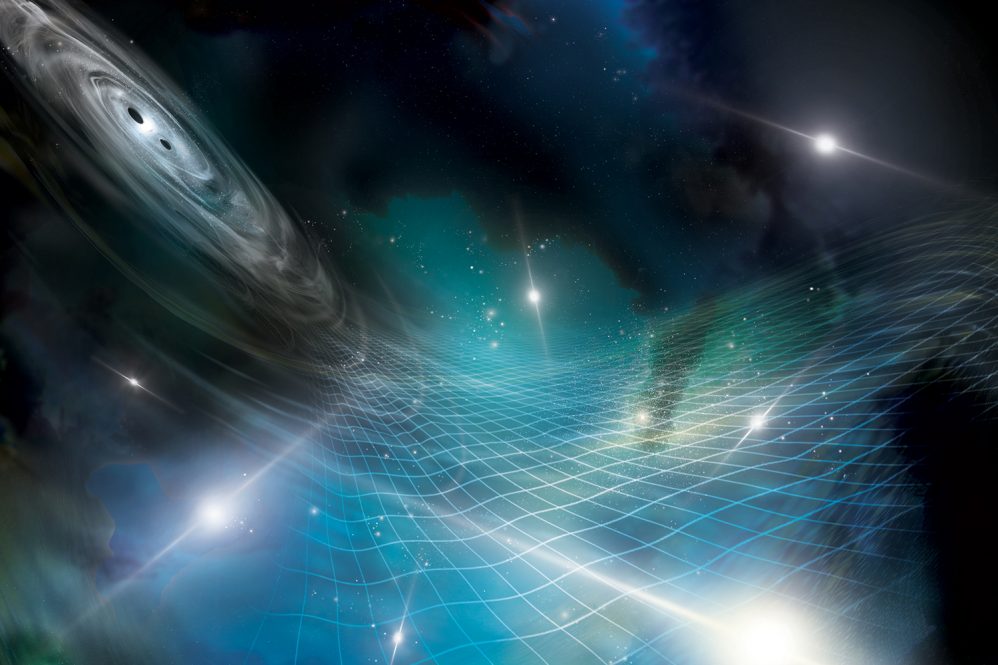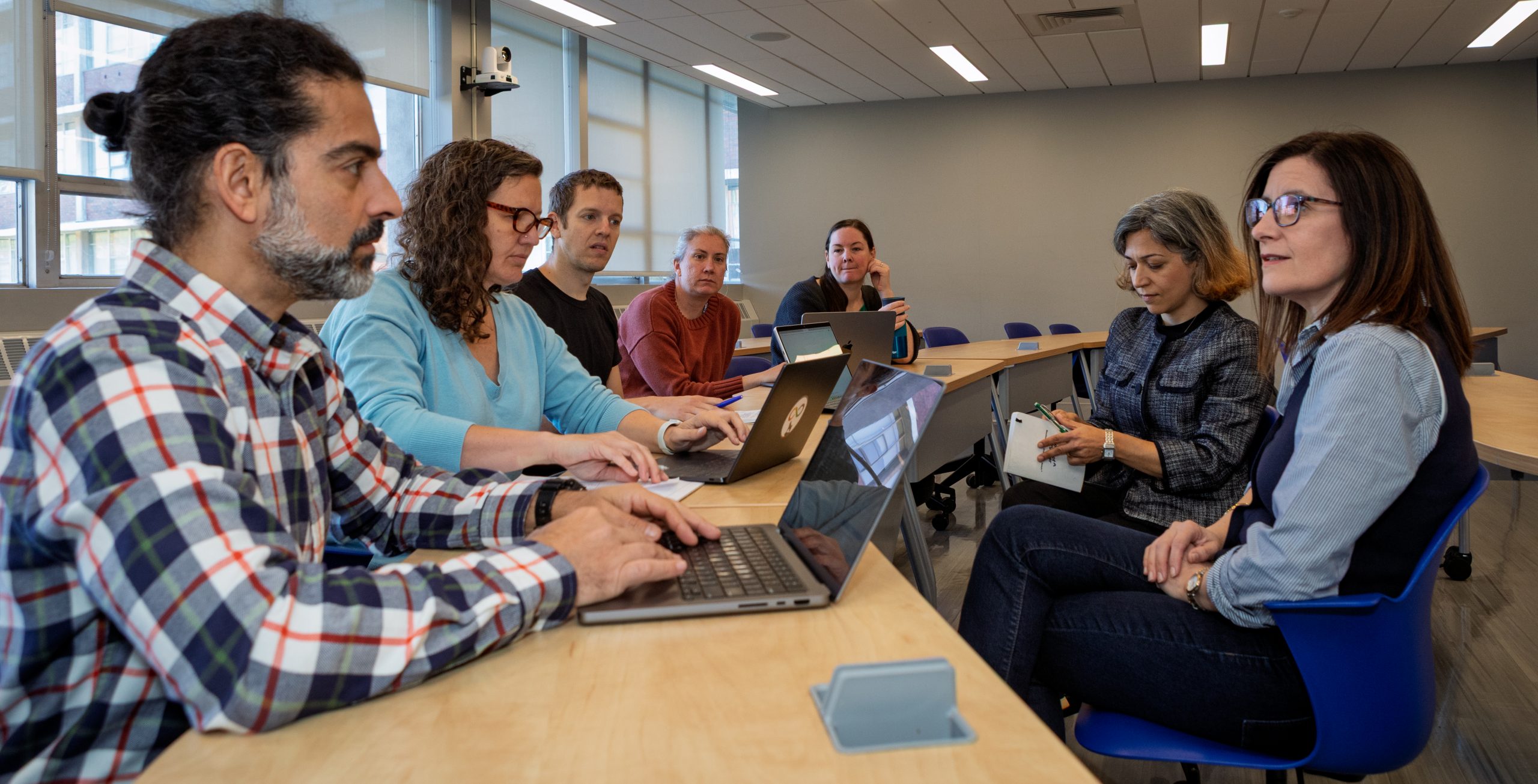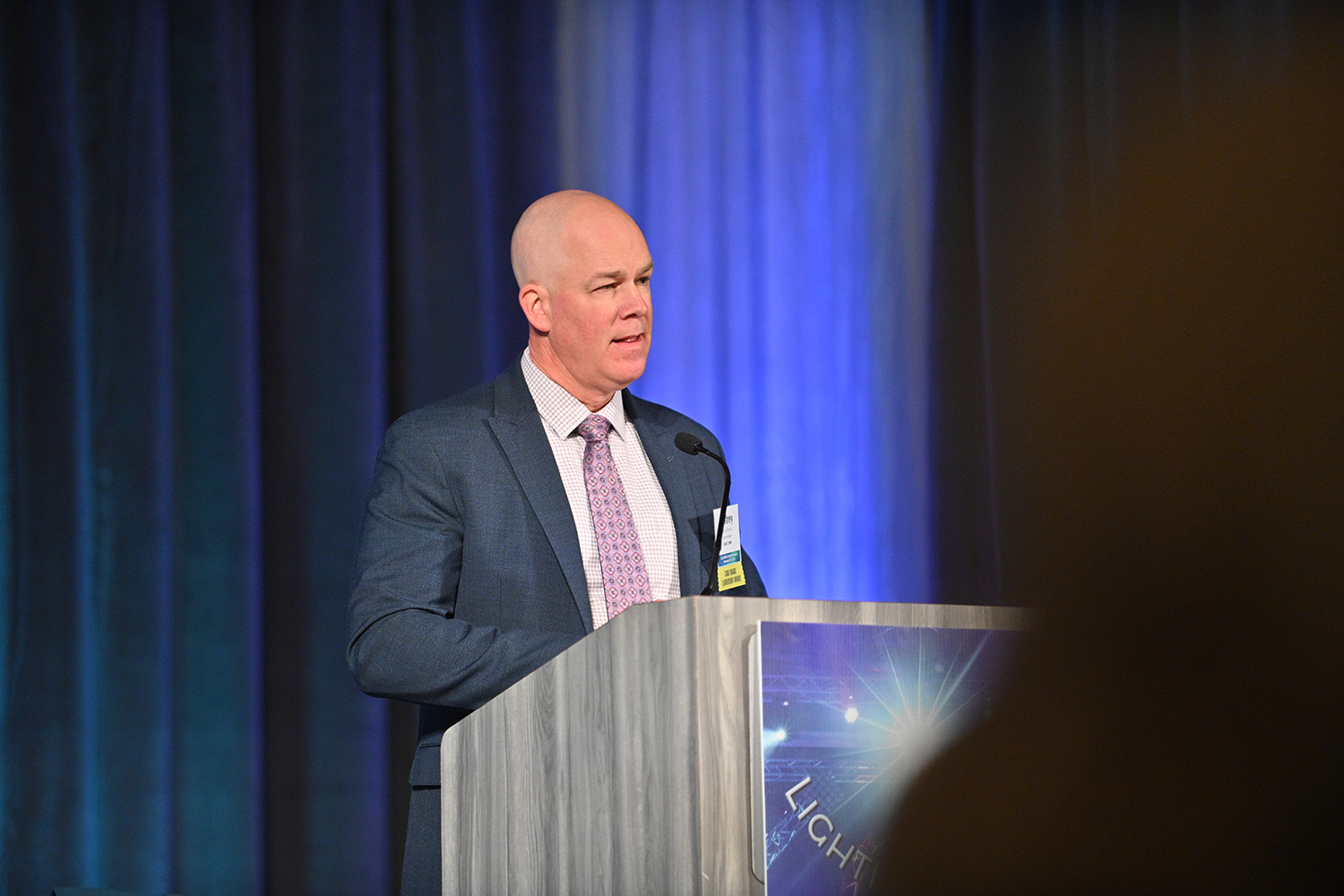Massive celestial objects like supermassive black holes or colliding stars create ripples in spacetime, called gravitational waves. These waves have the potential to teach us a lot about how the universe works. However, unlike stars, gravitational waves cannot be seen but scientists are getting closer to detecting them.
Since 2007, NANOGrav, the North American Nanohertz Observatory for Gravitational Waves, has focused on detecting gravitational waves, and in papers out this week in The Astrophysical Journal Letters researchers, including UConn Department of Physics researchers Deborah Good and Chiara Mingarelli, detail the advancements they have made toward the detection of a low-frequency gravitational wave background.
Good, a post-doctoral researcher in Mingarelli’s lab, explains that the size of a gravitational wave can vary depending on the mass of the objects they emanate from, and the ripples can be measured by the changes in the position of the objects they pass through. Another challenge in detecting these gravitational waves is their low frequencies, says Good. The wave crests may be spaced by 10 or more years, so the measurements take time.
The researchers are working to detect these ripples using something they can see: pulsars, which are fast-spinning, dead stars that emit light. As pulsars spin, the light appears to astronomers as a pulse happening at precise intervals, therefore these spinning stars can be used like celestial clocks.
“They spin hundreds of times every second. We measure when we see pulses from each pulsar and over the course of a decade, we will generally only be off in our prediction by around 100 nanoseconds,” says Good.
Good explains this paper is the result of a collaboration between several groups of scientists, amassing 15 years of pulsar timing data from the world’s best radio telescopes to create a pulsar timing array comprised of data from 68 pulsars.
“In the best-case scenario, our predictions are so precise they are on par with atomic clocks,” Good says. “We know that when a gravitational wave passes through the galaxy, it should cause shifts in an observed arrival time of the pulsar timing array signal. We think of it like things are stretched and squeezed between the pulsar and the earth almost like a bungee cord, where you get these changes in the time of arrival of the pulse from what you’d predict, the signal may arrive a little bit later or a little bit earlier than you expect, in a way that’s dependent on where you’re looking in the sky.”
Good says they need to account for as many measurements as possible because there are potential sources of disruption in the data, such as clouds of ionized gas that can impact the pulse times of arrival, but with careful measurements and models, they can determine if deviations in the data such as this are intervening effects that can be corrected for.
“Usually, we look at pulsars on any given day and they would be about the same, but when we’re doing these very precise, long-term studies, we also look at how the interstellar medium is changing over the course of these 15 years. There are short-term daily variations and medium-term variations over weeks or months, and then there are periodic variations in things that have to do with the Earth’s orbit around the sun that also show up,” says Good.
These are among many variables the teams have considered for this dataset, and fortunately Good says collaborators including Mingarelli and the paper’s lead authors Sarah Vigeland and Stephen Taylor, have worked hard to develop code and careful statistical analyses to search for what they expect the signal from a gravitational wave background look like.

“We all work together in something called the International Pulsar Timing Array (IPTA), it’s what we will call a consortium of consortia or a collaboration of collaborations,” says Good. “We bring all our data together and create one big data set that uses all the data from around the world with the world’s best telescopes, looking at as many pulsars as possible. We know that this will give us a much stronger detection of gravitational wave background, and it’ll let us start to characterize it much better. We’re very excited given that we seem to be seeing a gravitational wave background in each individual dataset, creating a combined data set is going to give us a much stronger and more robust signal to understand what’s going on with the gravitational wave field.”
The tricky part is that everyone approaches the problem slightly differently, so putting the data together is not as simple as it seems, so one of Good’s projects has been building software tools to help streamline this collaborative process.
“Deborah has done a huge amount of work for this 15-year dataset and is spearheading an effort combining all of the Pulsar Timing Array data to create this large international dataset,” says Mingarelli. “We are creating the best possible data set and thinking about how we talk about our code, how we document and create guides for using our code, teaching students, and making this an inclusive effort.”
Good says the detection of gravitational wave background is a “century project,” meaning it is something that is going to create a whole new way of looking at the universe and a whole new perspective on astronomy. Drawing on the comparison in the 20th century where researchers made huge knowledge gains once the universe could be viewed beyond the visible light spectrum, detecting the gravitational wave background will lead to similar breakthroughs.
“When people were building the first radio telescopes or the first X-ray telescopes, they couldn’t even understand what they were going to find or the theories that people had said they couldn’t prove that they were going to be able to prove. In the 21st century, I believe we’re doing the same thing with the gravitational wave spectrum. There is great importance in the investment in things like radio observatories so we can do this science. Especially with the recent loss of the Arecibo Observatory, we’re concerned about the future because there’s so much good radio astronomy to do. We should stay committed to observatories.”



